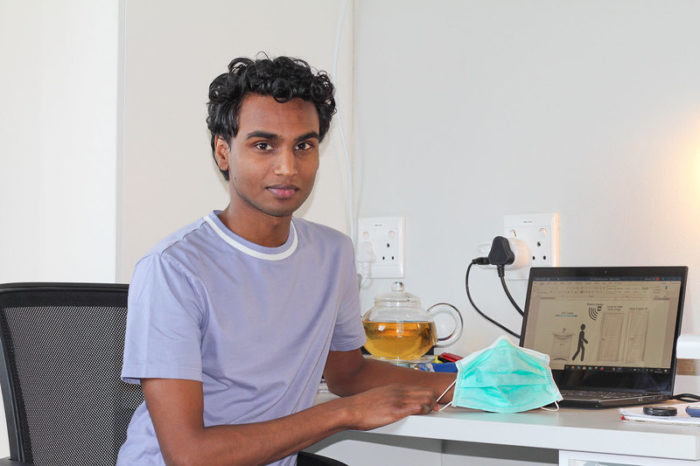When a professor challenged his students to design a device that could help counter the COVID-19 pandemic, UCT student Rowyn Naidoo rose to the occasion.
Naidoo is an electrical engineering student who is close to finalising his unique and affordable, smart short-wavelength ultraviolet-C (UVC) light system that disinfects surfaces, the air and large rooms. The device can even be used to sanitise face masks, making them easily reusable.
Naidoo’s design and idea was inspired by the need he saw on his own campus. He designed a device that could not only help students at the university but people everywhere.
“I took the route of how we can destroy or inactivate the actual viruses that are around on a large scale, with a view towards getting our campuses and similar spaces functioning normally, but safely,” Naidoo told UCT News.
Naidoo’s design harnesses the power of UVC light, which is effective in killing viruses and other micro-organisms in and on our surroundings by destroying the nucleic acids and disrupting their DNA. He used research obtained by the IES Photobiology Committee on germicidal ultraviolet radiation (IES 2020) to aid in his design.
According to research, the SARS-CoV-2 virus that causes COVID-19 is rendered non-infectious through the application of UVC radiation because it is able to damage the RNA sequence and break up the bonds of the virus. Essentially, this specific type of radiation is capable of killing the virus that causes COVID-19 in the first place.
“UVC light also works on drug-resistant superbugs, fungi and bacteria, and disinfects in a matter of seconds or minutes – depending on the dosage,” says Naidoo.
He explains further that UVC light is part of the UV spectrum but at a far higher frequency. It emits shorter, more energetic wavelengths of light and can even be dangerous to humans in the case of direct exposure.
UVC is not a new technology but Naidoo is harnessing it in a sanitising system that could help fight the virus in a cost-effective way thanks to the reusable materials used in its design.
“While there are some commercially available UVC disinfection products, this project will provide automatic, optimised disinfection on a much larger scale, such as entire rooms or lecture venues. I took the approach of how to actually kill the viruses while playing to my strengths as an electrical engineering student. I was aware of the use of UVC for this application and that it’s not in common use because of safety factors and cost. I then played around with these limitations towards a solution that is safe, feasible and cost-effective,” adds Naidoo
Naidoo’s smart design uses a combination of wall or ceiling mounted lamps with occupancy detectors which turn on the UVC lights safely when no one is in the room to irradiate the air and surfaces in the room for a set time before switching off automatically.
Trip switches are also featured in the design to ensure that if someone enters the room they are not exposed to the UVC light.
“This solution requires no operational labour, which makes it easy to use and means no one needs to touch the surfaces, so cleaning staff won’t be in danger of being exposed to surfaces contaminated by viruses by physically having to clean these with chemical disinfectant,”explains Naidoo.
While Naidoo’s system is effective for COVID-19, it will also reduce the spread of airborne illnesses like the flu and TB.
“This is especially important in confined spaces with many people, such as lecture venues,” he adds. Practically, the lights can be used to disinfect lecture venues before and after each lecture, with similar applications to cinema theatres, classrooms, labs, toilets, etc.”
Another huge benefit of his system is the ability to disinfect and sanitise masks to ensure “single-use” masks to be used more than once.
Source: https://www.news.uct.ac.za
Pictures: UCT News






